
| Apple Looper (one synonym : Scotosia canata Walker, 1862) EUPITHECIINI, LARENTIINAE, GEOMETRIDAE, GEOMETROIDEA | (donherbisonevans@yahoo.com) and Ted Cadwallader & Stella Crossley |
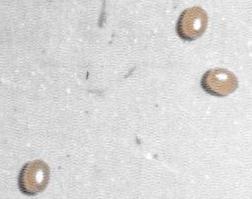

| Apple Looper (one synonym : Scotosia canata Walker, 1862) EUPITHECIINI, LARENTIINAE, GEOMETRIDAE, GEOMETROIDEA | (donherbisonevans@yahoo.com) and Ted Cadwallader & Stella Crossley |

This Caterpillar starts life as one of a number of off-white spheroidal eggs laid individually.
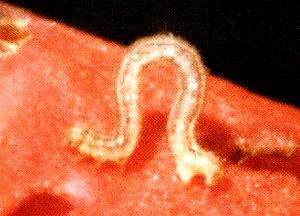
The caterpillar is a minor pest on
The caterpillar has also been found feeding on the flower buds of:
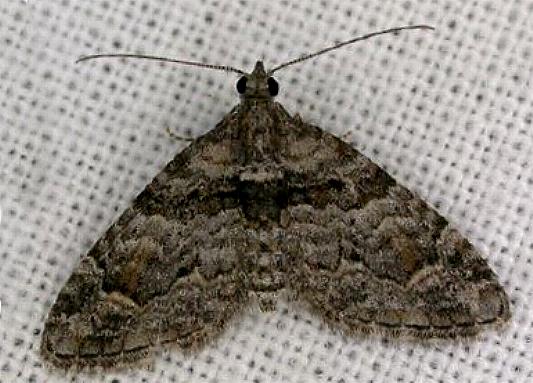
The adult moth is brown with a wavy pattern of darker brown.
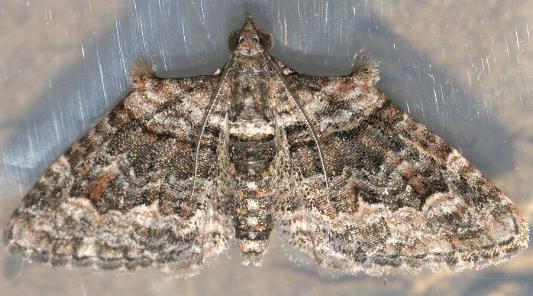
The male is notable for the projecting bunches of hair-like scales on the costa of each forewing. The wing span is about 1.5 cms.
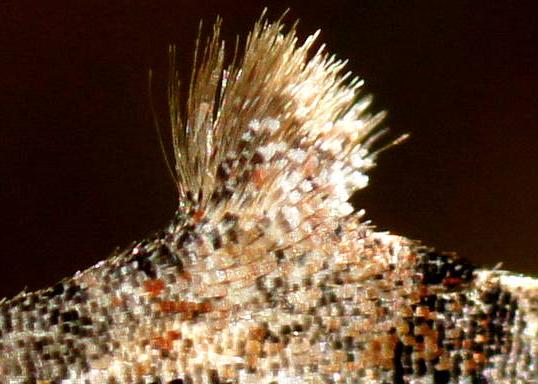
The coloration can vary considerably between individuals, although the zigzag patterns between areas is quite constant,
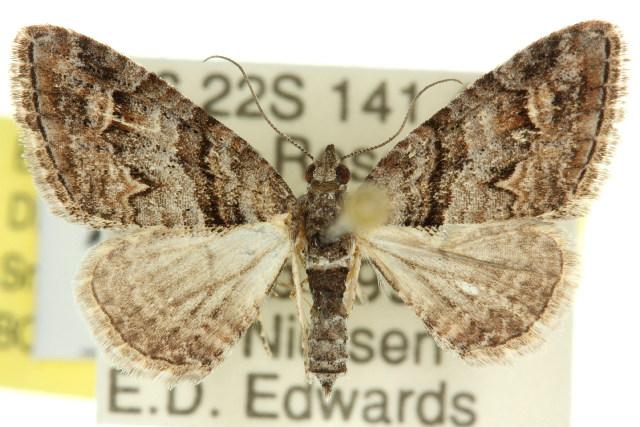
The species is found over the south Pacific including, including :
and in Australia in:
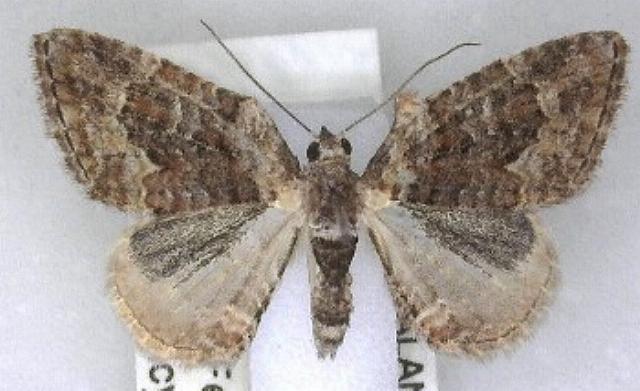
In Sydney, counts were made of the number of adults coming to a nightly ultra-violet light, and the numbers totalled for each month of the year, showing possibly two generations per year :
| Jan | Feb | Mar | Apr | May | Jun | Jul | Aug | Sep | Oct | Nov | Dec |
|
|
|
|
|
|
|
|
|
|
|
|
|
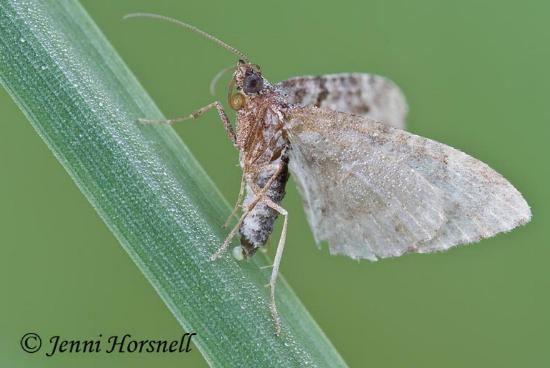
Some taxonomists insist that the the Latin gender of the species name should agree with that of the genus, and the species should be named Phrissogonus laticostatus, but that is not what the original author (Francis Walker) named it.
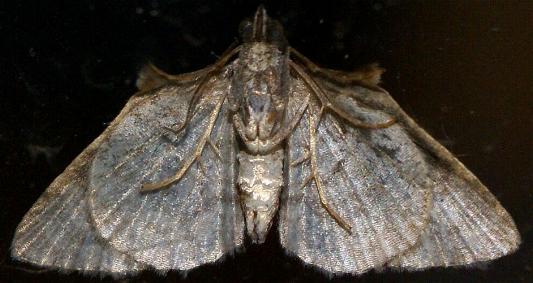
Further reading :
Ian F.B. Common,
Moths of Australia,
Melbourne University Press, 1990, fig. 37.18, pp. 67, 376.
Peter B. McQuillan, Jan A. Forrest, David Keane, & Roger Grund,
Caterpillars, moths, and their plants of Southern Australia,
Butterfly Conservation South Australia Inc., Adelaide (2019), p. 109.
Peter Marriott,
Moths of Victoria: Part 3,
Waves & Carpets - GEOMETROIDEA (C),
Entomological Society of Victoria, 2011, pp. 30-31.
Francis Walker,
Catalogue of Lepidoptera Heterocera,
List of the Specimens of Lepidopterous Insects in the Collection of the British Museum,
Part 24 (1862), p. 1196, No. 66.
 caterpillar |  butterflies |  Lepidoptera |  moths |  caterpillar |
(updated 13 September 2013, 9 May 2025)